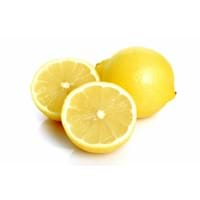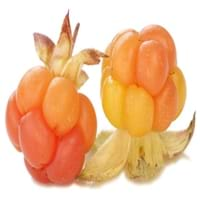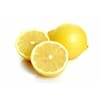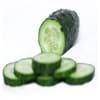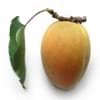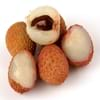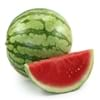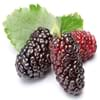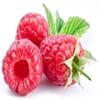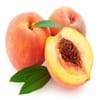Health Benefits
Arthritis treatment, Asthma treatment, Cancer prevention, Kidney stone treatment, Prevents constipation, Purging blood, Treatment of rheumatism
Cancer prevention, Heart care
General Benefits
Boosts immune system, Cures headache, Cures fever, Digestive aid, Flu treatment, Maintains healthy cholesterol level, Treatment of common cold
Anti oxidant properties, Boosts immune system, Digestive aid, Improves blood circulation, Maintains healthy cholesterol level, Strengthens bones
Skin Benefits
Heals sunburn, Reduces wrinkles, Skin rejuvenation, Treatment of acne, Treatment of skin diseases
Anti-aging benefits, Reduces wrinkles, Skin rejuvenation
Hair Benefits
Prevents hair loss, Treatment of dandruff
Protects hair
Allergy Symptoms
Eczema, Hives, Inflammation, Itching, Skin rash, Swelling
NA
Side Effects
Diuretic effects, Heart burn, Tooth decay, Chances of sunburn
Allergic reaction
Best Time to Eat
Along with meal, Best to drink lemon water on an empty stomach., Don't consume at night and before bed
As a snack in the late afternoon, Don't consume at night and before bed, Eat the fresh ones, avoid mixing with any other foods, don't eat after meal., Morning time (before lunch)
Vitamin A (Retinol)
Not Available
Vitamin B5 (Pantothenic Acid)
Not Available
Vitamin B6 (Pyridoxin)
Not Available
Vitamin B9 (Folic acid)
Not Available
Vitamin C (Ascorbic Acid)
Vitamin E (Tocopherole)
Not Available
Vitamin K (Phyllochinone)
Not Available
Lutein+Zeaxanthin
Not Available
Calories in Fresh Fruit with Peel
Not Available
Calories in Fresh Fruit without Peel
Not Available
Calories in Frozen Form
Not Available
Calories in Dried Form
Not Available
Calories in Canned Form
Not Available
Type
Citrus, Tree fruit
Berry
Season
All seasons
Winter
Varieties
Avalon Lemon, Bears Lemon, Buddha's Hand, Bush Lemon, Citron, Eureka Lemon, Dorshapo Lemon, Finger Citron and Fino Citron
Not Available
Color
Yellow, Yellowish-orange
Orange, Pink, Yellow
Inside Color
Yellow
Orange
Origin
China, India
Arctic Tundra
Soil Type
Well-drained
Loam, Well-drained
Climatic Conditions
Hot, Sunny
Cold, Warm
Facts about
- Oil extracted from lemon peels is used for fingerboard of guitars.
- During Renaissance, ladies used lemons to redden their lips.
- Aroms of lemon decreases the level of stress hormones.
- Cloudberry is also called as bakeapple, knotberry , knoutberry, aqpik or low bush salmonberry.
- In Nordic countries, cloudberries are used to make traditional liqueurs.
Top Producer
China
Norway
Other Countries
Argentina, Brazil, India, Iran, Italy, Mexico, Spain, Turkey, United States of America
Canada, Denmark, Finland, Iceland, Sweden, United States of America
Top Importer
United States of America
Norway
Top Exporter
Mexico
Finland
Botanical Name
Citrus limon
Rubus chamaemorus
Synonym
Not Available
Not Available
Subkingdom
Tracheobionta
Tracheobionta
Division
Magnoliophyta
Magnoliophyta
Class
Magnoliopsida
Magnoliopsida
Species
C. limon
R. chamaemorus
Generic Group
Citrus fruit
Not Available
Difference Between Lemon and Cloudberry
We might think that Lemon and Cloudberry are similar with respect to nutritional value and health benefits. But the nutrient content of both fruits is different. Lemon and Cloudberry Facts such as their taste, shape, color, and size are also distinct. The difference between Lemon and Cloudberry is explained here.
The amount of calories in 100 gm of fresh Lemon and Cloudberry with peel is Not Available and 51.00 kcal and the amount of calories without peel is 29.00 kcal and Not Available respectively. Thus, Lemon and Cloudberry belong to Low Calorie Fruits and Low Calorie Fruits category.These fruits might or might not differ with respect to their scientific classification. The order of Lemon and Cloudberry is Sapindales and Rosales respectively. Lemon belongs to Rutaceae family and Cloudberry belongs to Rosaceae family. Lemon belongs to Citrus genus of C. limon species and Cloudberry belongs to Rubus genus of R. chamaemorus species. Beings plants, both fruits belong to Plantae Kingdom.
